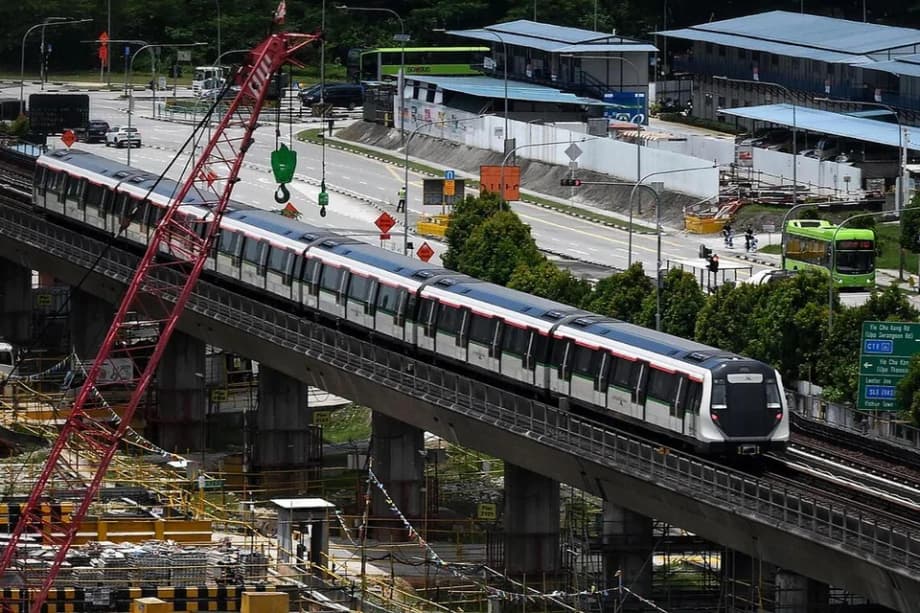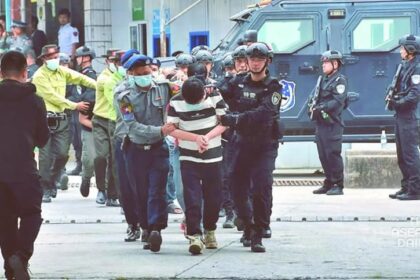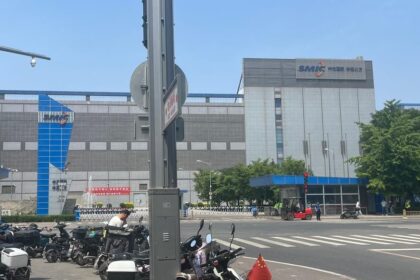What commuters can expect from the new maintenance strategy
Singapore will stage more planned closures of MRT lines over longer stretches so engineers can complete heavy maintenance and upgrades faster and with higher safety margins. Acting Transport Minister Jeffrey Siow outlined the shift at the International Metro Operators Summit in Singapore, where he addressed an audience of global rail specialists. The current practice of squeezing maintenance into short overnight windows leaves very little time for complex work. As the network grows older and busier, the government and rail operators want longer, continuous access to tracks and systems so teams can complete critical tasks in one push rather than in many starts and stops.
- What commuters can expect from the new maintenance strategy
- Why nightly work windows are no longer enough
- The East West Line closure in detail
- What experts recommend
- Technology upgrades and the challenge of legacy systems
- Workforce, skills and the new National Transport Academy
- How planned closures are managed
- Why longer closures can speed up upgrades
- At a Glance
An early example is a 10 day stoppage on parts of the East West Line. From Nov 29 to Dec 8, there will be no train service between Bedok and Tampines, and no service between Tanah Merah and Expo. The work supports major track and systems activities tied to network upgrades, including connection works to the new East Coast Integrated Depot that will consolidate maintenance for multiple lines. Commuters can expect alternative transport arrangements and longer travel times on affected days.
Officials stress that early closures and late openings were useful in past renewal campaigns, but these provide only small increments of extra time. Longer scheduled shutdowns unlock uninterrupted access for teams, heavy machinery and test trains. The approach follows recommendations from an international advisory panel studying rail reliability. Mr Siow has asked for public understanding, saying the intention is to deliver a more reliable ride once the works are completed.
Why nightly work windows are no longer enough
Most rail maintenance in Singapore happens after the last train leaves the line. Operators have roughly 3.5 hours to move equipment onto the track, complete tasks, and clear the line before the first morning service. After accounting for set up and withdrawal of heavy equipment, actual engineering time averages around two hours. That is barely sufficient for daily readiness, such as inspections and housekeeping. It leaves little room for major upgrades like replacing long stretches of rail, installing new cables, or integrating complex systems that must be tested end to end.
Speaking to more than 700 rail experts at the summit, Acting Transport Minister Jeffrey Siow said the network is ageing, while parts of it must be renewed without reducing safety or service quality. He explained that small extensions to engineering hours no longer deliver enough time for complicated jobs that require continuous access.
Longer scheduled closures are needed to enable faster and safer repair works.
Complexity is part of the challenge. A modern MRT is like a house, a car and a computer rolled into one. Tracks, power supply and tunnels are the house. Trains and their mechanical systems are the car. Signalling, communications and fleet monitoring are the computer. Each piece must not only function well on its own, it must also work seamlessly with everything else. Extended closures give engineers time to assemble and test upgrades in a realistic, line wide environment before reopening to commuters.
The East West Line closure in detail
The 10 day East West Line stoppage will affect two segments at the eastern end of the network. Services will pause between Bedok and Tampines, and between Tanah Merah and Expo. These segments are among the busiest corridors during peak hours. The works include track and systems activities to prepare for a new depot and to renew assets that are nearing mid life. With continuous access, crews can install equipment, run verification tests and correct issues without the nightly race against the clock.
During the stoppage, journeys in the east will take longer. Rail operators and the Land Transport Authority will provide replacement options that typically include bus bridging and modified train shuttles where alignment permits. Commuters should set aside extra time, follow station advisories and check operator apps for the latest routing information. Similar arrangements have worked during earlier adjustments on the North South and East West lines, when shuttle buses and short train shuttles kept key connections open while crews worked on power and track renewal.
Here are simple steps that can reduce disruption to your routine:
- Plan for additional travel time, especially during weekday peaks.
- Check operator apps and station notices for live updates and alternative routes.
- Consider starting earlier or working flexibly if your employer allows it.
- Look for bus routes that parallel the affected rail segments where possible.
What experts recommend
An independent international advisory panel invited to support Singapore’s rail reliability task force has backed the idea of longer planned shutdowns. The panel was convened after a series of delays across the network in mid 2024 and is reviewing asset renewal, technology adoption and incident communication.
Tony Lee, a veteran rail executive who spoke for the five member panel, summarised the rationale for longer closures and the need for careful planning across systems that are interdependent.
Carry out longer planned shutdowns of segments of the rail network so that critical maintenance and renewal works can be done safely and efficiently.
The panel also urged a shift toward predictive maintenance using comprehensive condition monitoring, so engineers can detect wear patterns early and replace parts before failures occur. The task force is exploring digital twins, artificial intelligence and automation to spot problems ahead of time. Another focus area is communication during incidents, with guidance to tailor messages for three groups: passengers on board trains, passengers in stations, and people outside the network who are deciding whether to travel.
Technology upgrades and the challenge of legacy systems
One reason maintenance is hard is the presence of legacy equipment that was designed before the rise of cheap sensors and real time data. Retrofitting older trains and substations with modern monitoring can be difficult and costly. Operators are introducing tools that can speed up inspections and reduce risk for workers, such as robotic platforms for trackside checks and more automation within depots. Even so, some tasks still require skilled technicians working in tight spaces, often at night.
Hot axle detection after the 2024 East West Line disruption
Following a major incident on the East West Line in September 2024, the Land Transport Authority began procuring a unified system to detect overheating in axle boxes across all MRT lines, including the upcoming Jurong Region Line. An axle box houses bearings that let train wheels rotate smoothly. If bearing grease degrades or vibrations are not absorbed effectively, heat can build up to unsafe levels. Thermal cameras or infrared sensors positioned along the track can alert controllers when temperatures rise beyond safe limits.
Investigators found that during the 2024 disruption, a sensor detected a high temperature but the system did not identify the specific train, which delayed the response. Procedures and systems have since been updated. A common detection platform across lines will simplify maintenance, standardise training and help controllers make faster decisions. It will also complement existing measures such as temperature indicators and current monitoring.
Automation and robotics on the ground
Rail operators in Singapore are adopting more automation where it boosts safety and efficiency. One example is the use of a robotic inspection platform by SBS Transit to scan trains and tunnels for anomalies that human eyes might miss. SMRT has expanded automation at Bishan depot to streamline workflows and reduce manual handling during maintenance. These tools do not replace technicians. They reduce repetitive tasks, make inspections more consistent and free up engineers to focus on complex diagnosis and repair.
Workforce, skills and the new National Transport Academy
Singapore’s rail workforce numbers about 8,000 people and the median age is above 40. The sector competes with aerospace, electronics and other industries for technicians and engineers with similar skill sets. Rail maintenance is sometimes viewed as dirty, dangerous and difficult. That perception makes it harder to attract younger workers who bring fresh digital skills and energy.
Mr Siow addressed the manpower challenge directly during his summit remarks, noting retirements in coming years and the need to build a stronger pipeline of talent.
If the sector cannot attract enough younger engineers and technicians, manpower shortages will worsen as senior technicians retire.
The government and operators are expanding scholarships, apprenticeships and on the job training. The National Transport Academy, which brings together expertise from existing rail, bus and other training programs, aims to speed up skills development and strengthen career pathways. Part of a multi year rail maintenance fund is set aside for manpower development, including upskilling in data systems, asset management and safety practices. These investments support the shift toward predictive maintenance and more advanced diagnostics.
How planned closures are managed
Singapore has used planned adjustments many times to complete renewal work. In 2018, selected East West and North South Line stations closed earlier on weekends so crews could replace power cables, renew bearings on viaducts and carry out tunnel works. In 2019, early closures and late openings on sections of the North South Line enabled installation of new 22 kV power cables and bearing replacements. During these periods, operators ran frequent shuttle buses to preserve connectivity and used short shuttle train services where track geometry allowed.
When a stretch is closed for works, the playbook is familiar. Shuttle bus routes link affected stations, service intervals are tuned to match expected passenger loads, and staff guide commuters to temporary stops. Announcements run on trains, in stations and across social media and operator apps. Affected last train times are publicised in advance. During longer shutdowns, teams also set up on site logistics hubs so materials and equipment are readily available, which shortens the time between tasks.
Simple planning can make interruptions less painful for commuters:
- Check last train times on the dates you intend to travel and plan your transfers.
- Use operator apps to follow bus bridging routes and live updates on headways.
- Build a buffer of at least 15 to 30 minutes for trips through the affected area.
- Consider remote work or flexible hours if your employer offers those options.
Why longer closures can speed up upgrades
Short nightly windows come with a hidden penalty. Crews spend precious minutes moving equipment into position, isolating power, setting up protection and conducting safety briefings. At the end of the night, the process happens in reverse. That leaves very little time for actual engineering. A continuous closure removes the repeated set up and tear down, so teams can lay longer stretches of cable, weld rail in longer segments, and run comprehensive tests without interruption. The result is higher productivity and safer conditions for staff.
Longer closures also help when integrating new assets like a depot. Connecting a depot involves track tie ins, power system changes, and checks across signalling and communications. Each piece must be tested with the rest of the line, which is easier to do when trains are not carrying passengers. Countries with mature metro systems frequently plan weekend or multi day closures for similar reasons. The near term inconvenience is traded for fewer faults and smoother operations later.
At a Glance
- Singapore will schedule more planned MRT closures over longer periods to complete major upgrades faster and more safely.
- A 10 day East West Line stoppage runs from Nov 29 to Dec 8, affecting Bedok to Tampines and Tanah Merah to Expo.
- Short nightly maintenance windows yield only about two hours of actual engineering time, which is not enough for complex work.
- An international advisory panel supports longer shutdowns and urges predictive maintenance and stronger incident communication.
- LTA is procuring hot axle detection systems across all lines after a 2024 East West Line disruption highlighted monitoring gaps.
- Operators are adding automation in depots and using robotic inspection tools to improve safety and consistency.
- The rail workforce faces ageing and hiring challenges, and the National Transport Academy aims to strengthen training and careers.
- During closures, bus bridging and shuttle trains help maintain connectivity, and commuters should plan extra time for travel.












